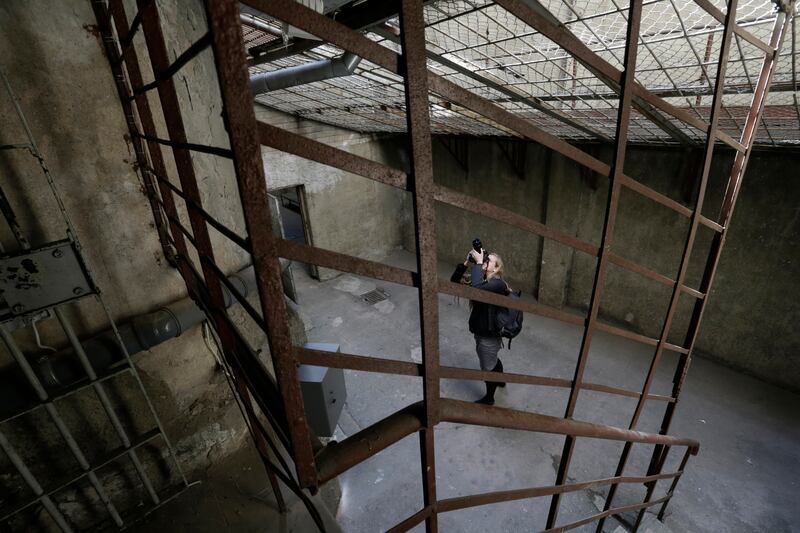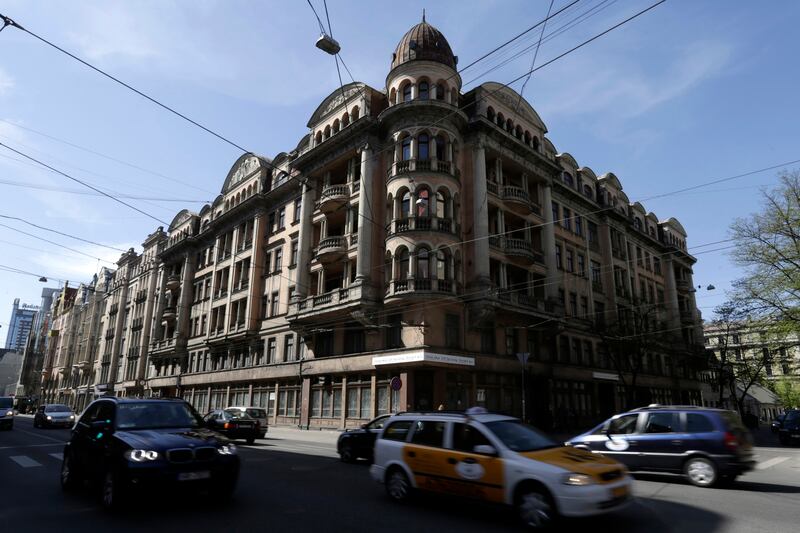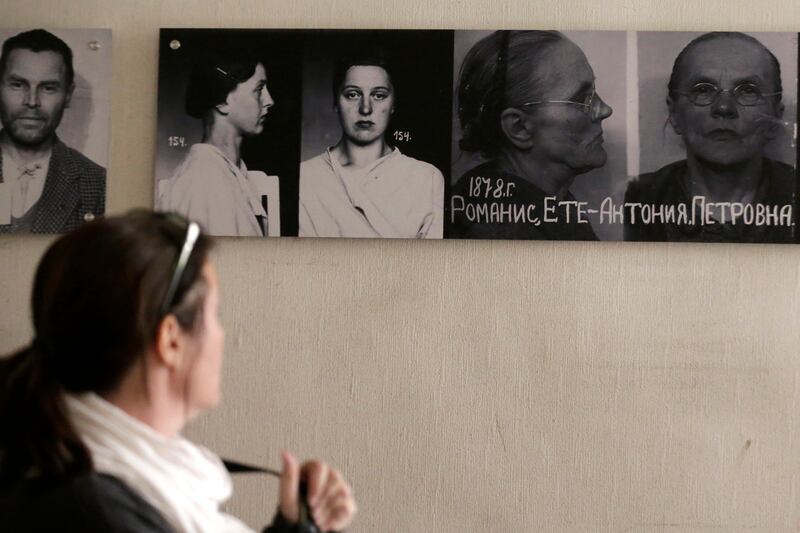It’s like the plot of one of those dystopian young adult novels. There’s a sudden rapping at the door in the middle of the night. A stoic man in a trim suit hands you a warrant. Before you can open the crisp envelope you’re escorted to an imposing structure in the center of town. You’re led inside, and you disappear—never to be heard from again.

For years, this was the reality for those living in the subjugated corners of the Soviet Union, where prosperous and forward-thinking individuals suddenly found themselves on the wrong side of the law. Communist ideals were imposed with an iron fist, and any dissenters—from politicians to poets—were disposed of in a variety of decisive ways: deportation, torture, execution.
The agents responsible for cleansing society of the bees that didn’t belong in the hive were known as the KGB, the Committee for State Security (or the Komitet Gosudarstvennoy Bezopasnosti, in Russian.) The organization rivaled the Stasi in its ability to gather information, purge adversaries, and evoke silent fear through an elaborate network of officers and collaborators.
In Riga, Latvia’s capital, the KGB set up its stronghold in an elegant building along the grand boulevards of the city center. The Latvians dubbed it “Stūra māja”—the Corner House, an ironically docile name considering the wicked machinations undertaken behind its walls.
Built during the industrial boom at the beginning of the 20th century, the Corner House was originally commissioned as a stack of luxury apartments for the newly wealthy. The façade bore all the trendy trappings of the Art Nouveau movement that swept across the European continent. It was so beguiling that the Latvian government purchased the building in the 1920s and transformed it into offices for the Ministry of the Interior.

When the Soviets barged into Latvia in 1940, the NKVD (Narodnyy Komissariat Vnutrennikh Del in Russian, the predecessor of the KGB) co-opted the ministry, enlisting the Latvian officials to do their bidding in the ultimate act of governmental puppetry.
Privy to the grand totalitarian plans laid out by Moscow officials, General Ludvigs Bolšteins—head of the Latvian Border Guard—decided to commit suicide instead of abetting the enemy in the destruction of a free Latvia. He shot himself at his desk on the fifth floor of the Corner House, leaving a note warning others of the atrocities to come.
Bolšteins’s predictions quickly materialized, and a harrowing year of tyranny followed. On the eve of June 14, 1941, an unrelenting sequence of prisoner massacres and Siberian deportations came to a head when over 15,000 “blacklisted” people disappeared, essentially annihilating Riga’s elite in one fell swoop.

A month later, the German Nazis closed in on Latvia and its neighbors, Estonia and Lithuania, “saving” the region from Russian rule. Intent on carrying out their own agenda—eliminating the Jewish and Gypsy populations—they opened the doors of the Corner House to the public, exposing the hall of horrors in the hopes of stoking the fires of revenge and inspiring allegiance to the new regime.
And what the Latvians found was beyond their worst nightmares. While the upper floors were the prim domain of police officers and clerical staff, the basement contained a labyrinth of holding cells and interrogation rooms that led to a firing wall. Subterranean temperatures were kept above a sweltering 30 degrees Celsius (over 85 degrees Farenheit) to incite paralyzing thirst, as prisoners were stuffed 20 to a cell in rooms meant for four inmates. Blinding lights prevented sleep, the fetid stench of overflowing chamber pots made it hard to breathe, and captives were randomly selected for execution to maintain an air of continuous fear.
In 1944, the Nazi influence waned, allowing the Soviet tide to come crashing back down on the Baltic shores. The Corner House once again became a bastion of quiet influence for the KGB officials, who quickly reinstated their presence and iron-fist rule. This time, however, Latvians were concretely aware of the fate that awaited them should they receive a summons to the ominous house at the end of the block.
The KGB wielded their secret power through five dark decades until the end of the Cold War in 1991. When Latvia regained its independence, access to the lower levels of the Corner House was promptly shut off; the country chose to focus on its promising future rather than its painful past.

But after more than 20 years of freedom, the discourse began to change and talk of transforming the Soviet time capsule into a museum gained momentum. This year, the shuttered doors of the derelict structure are finally opening, turning the collective desire for truth-telling into reality.
With help from the influx of money from the EU that came in after Riga was named one of 2014’s European Capitals of Culture, the city is reopening the Corner House from May until mid-October. Visitors can tour the veritable haunted house, visiting the room where General Bolšteins took his own life and exploring the crypt-like cellar where countless victims lost their lives. Almost nothing has been touched since the fall of the USSR in 1991, providing an uncanny glimpse behind the Iron Curtain.
The only remnant of the era that remains off-limits to the public are the KGB’s administrative documents, meticulous notes detailing the workings of the secret police, including the names of collaborators, informants, and double agents—many of whom are still alive. Despite the newfound spirit of disclosure, these files have been sealed and stored in an undisclosed location. They contain a truth that is still too hard to bear.






